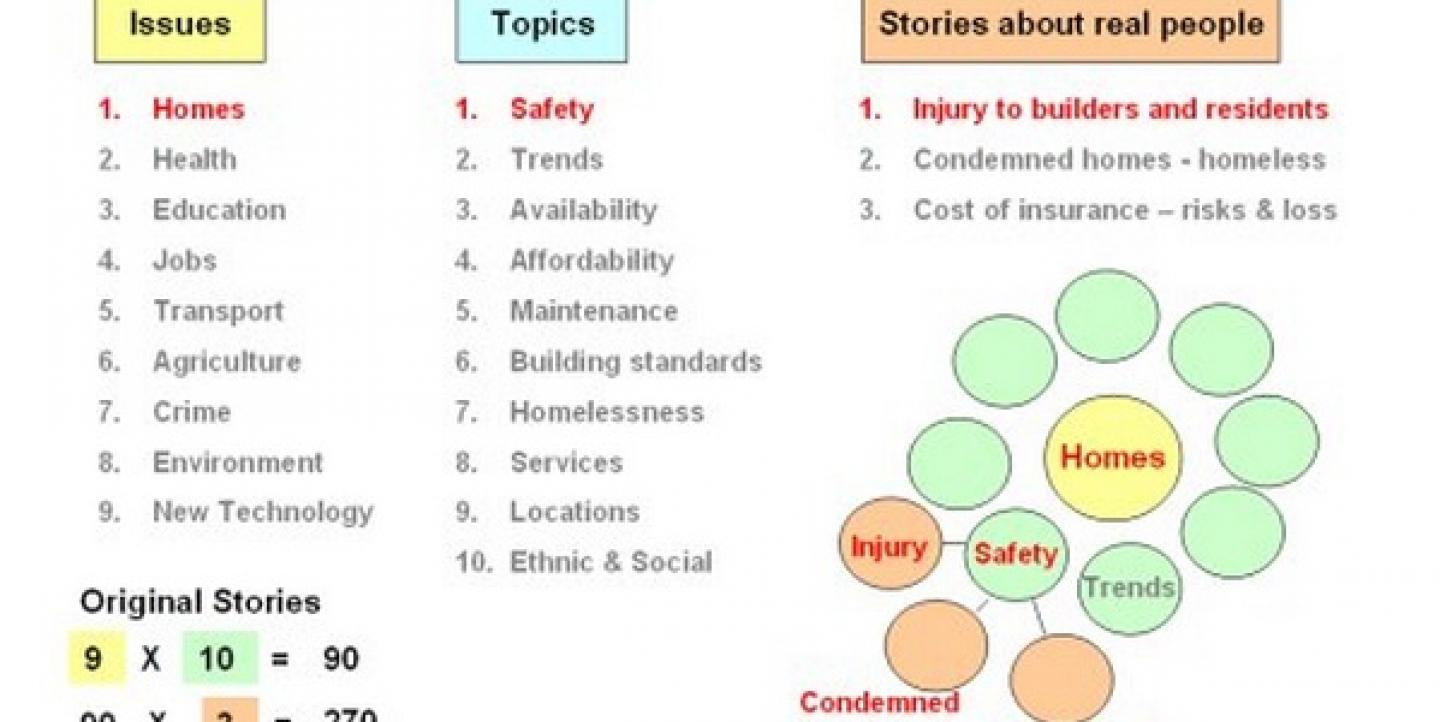Issue-led journalism is essential if journalists are to inform the public debate. It's the opposite of wires-led journalism where journalists reproduce what they are fed.
It means journalists have to set the editorial agenda by covering the issues that most concern their audience while explaining the significance of events. Without it, you may think you are producing journalism, but you are probably pumping out PR or propaganda.
The role of the journalist
Issue-led journalism means digging where others don't, shining a light in dark places, challenging the powerful and telling compelling stories about real people whose lives are being affected by the actions of others. Some may have another name for issue-led journalism, so don't bother Googling the term because you will probably end up back on this site.
When you have completed this exercise, you will have the formula for coming up with at least 10 original stories a week that will only appear on the wires or as the topic of a news conference after you have broken them. And that is the real test; that others are forced to follow up the stories you have found and broken. That is the sign of real journalism.
So here are a few tips to get started. And before you say it can't happen, I have carried out this exercise with media organizations in Central America, the Balkans, the CIS, Middle East and three countries in South East Asia.
In every case it has resulted in exclusive stories being published with the competition having to follow. Think of the stories you find fitting into the category of "had it not been for you, the world would never have known."
Defining an issue-led journalism strategy
Gather your senior editorial team together and decide what are the key issues concerning your audience. Of course, before you can carry out this exercise you need to know who that target audience is. You will have already carried out an audience segmentation exercise and decided which segments to super-serve in your editorial offering.
Wherever you are in the world, you will probably find those concerns boil down to issues such as jobs, housing, health, education, transport, law and order, the environment, etc.
It's funny the way that works out. You may think that doing this in Guatemala, Belgrade, Baku, Harare, Jakarta and Kuala Lumpur might result in different issues - but it doesn't. Once agreed, these form the key issues for your issue-led journalism strategy.
When I carried this exercise out in Azerbaijan in 2009 the editorial team came up with the following issues - homes, health, education, jobs (finance and the economy), transport, agriculture, crime, environment and new technology.
There may be fewer than nine, but there will usually be at least six. Try to find 10. Note that politics and corruption are not listed as key issues, despite being suggested as such almost every time I have carried out this exercise.This is because politics and corruption can impact all the areas mentioned above and are common to all, rather than issues or topics in their own right.
To read the full article, click here.
This article first appeared on the site of IJNet’s partner, Media Helping Media (MHM), a training information site that provides free media resources for journalists working in transition states, post-conflict countries and areas where freedom of expression and media freedom is under threat. The complete article is translated in full into IJNet’s six other languages with permission from Media Helping Media.

